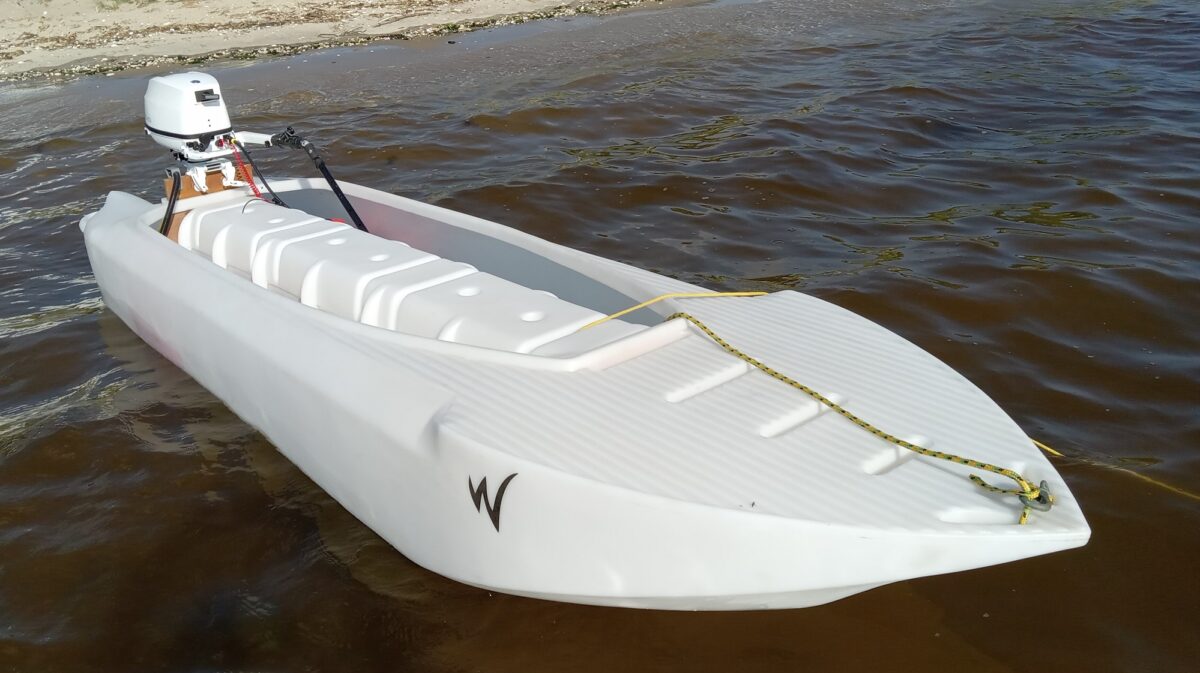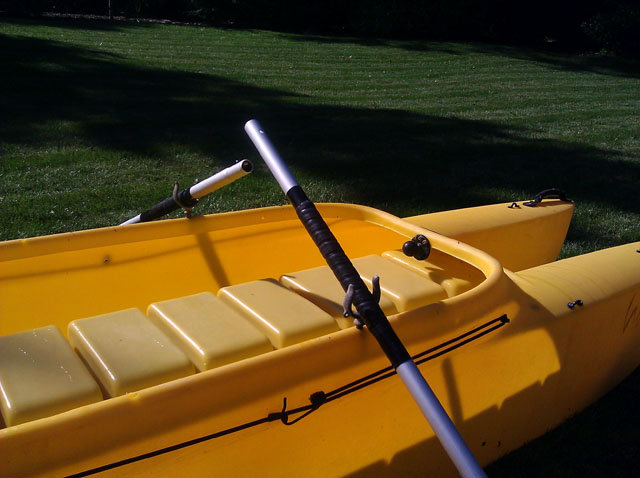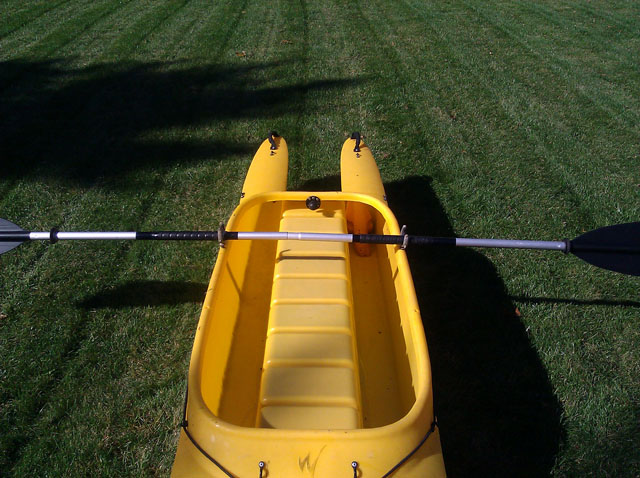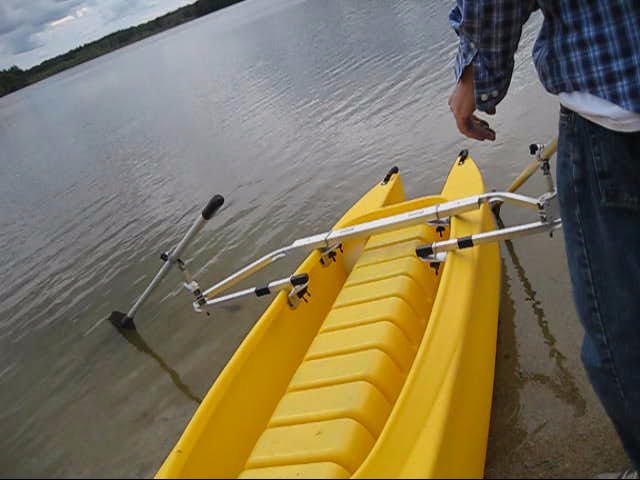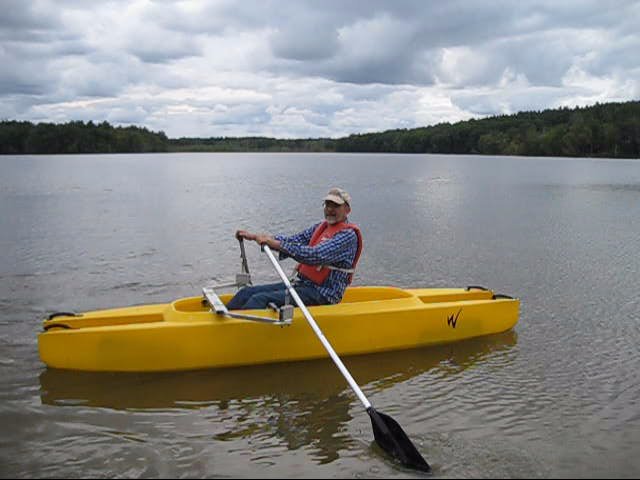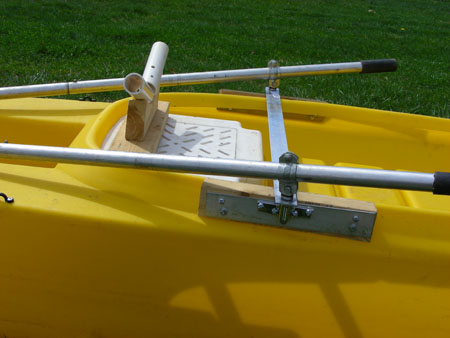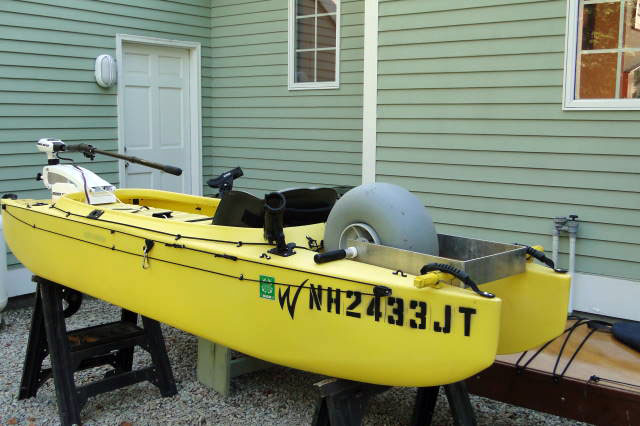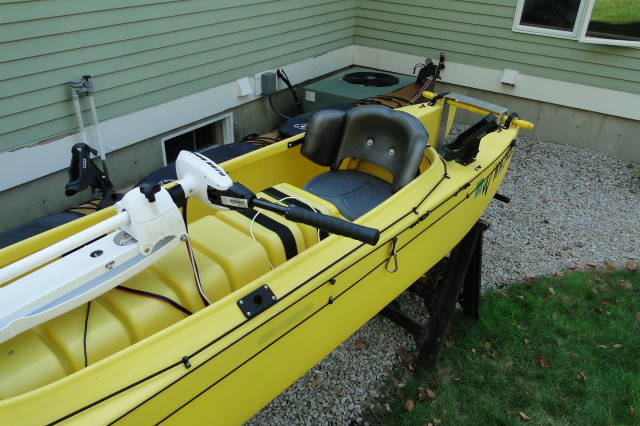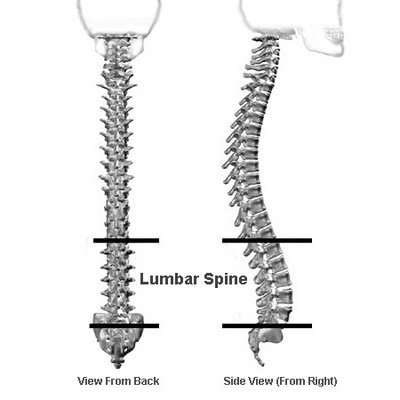Rowing allows us to use the larger muscles in our back and legs, and thus we can generate more power with a set of oars than with a paddle. Rowing is a low impact sporting activity, and it’s far less likely to hurt your back and legs than traditional kayaking in the L posture would. Since paddling W kayaks in the Riding posture doesn’t hurt your back, neither does rowing them.
Rowing offers you to exercise your legs, back, arms, abdomen and chest.
Despite the mechanical advantage of rowing, it is not popular for recreational touring and for propelling small, recreational fishing boats such as canoes and kayaks.
This can be attributed to rowing requiring a better technique, to the fact that in most cases rowing implies that you face the direction from which you came rather than the direction to which you’re going, and to the fact that rowing boats need to be bigger and often heavier than kayaks.
But rowing has its fans among people who fish from small boats such as canoes and dinghies, and even from kayaks.
The W kayak naturally lends itself to rowing, due to its unrivaled stability, and its high saddle that allows for the effective use of the passengers’ legs.
Paddle / Rowing Oars System For Quick Kayak Position Adjustments For Fishing Fast Species, By Brandon Cutter
Here is an example of a rowing setup for a W300 kayak used for offshore fishing in Cape Cod, Massachusetts: The oars are made from a two-piece, extra long, double-blade canoe paddle. When the angler wants to paddle, all he has to do is assemble the paddle. Town people can paddle this kayak using the two pieces of this paddle separately, as single-blade (canoe) paddles. More about this fishing kayak rowing system >>
Rowing Oars For W Fishing Kayak, by Jim Luckett, SailBoatsToGo
Jim Luckett is a professional designer who offers an out of the box rowing oars kit for the W500 fishing kayak.
Jim’s product is lightweight, efficient, and easy to install. More about this W fishing kayak rowing oars setup >
W500 Fishing Kayak Rigged With Rowing Oars, by Dave Baumbaugh, Pennsylvania
Dave Baumbaugh tried paddling his W500, and even stood up and paddled, but he also a set of oar locks on it, and was amazed by how fast and effortless rowing it was:
More about Dave’s fishing kayak with rowing oars >>
Bass Fishing Kayak With Rowing Oars and Outriggers, by Wayne Taylor, Florida
Due to his advanced age and balance impairment, Wayne needed a fishing platform that’s both extremely stable as well as comfortable. Back in 2006, when he purchased his W300, the W500 series wasn’t available, which is why Wayne added a pair of DIY outriggers to his kayak. Here is a movie showing Wayne’s rowing fishing kayak in action:
Interestingly, Wayne uses the oars to row ‘forward’ –
More about this fishing kayak with rowing oars >
